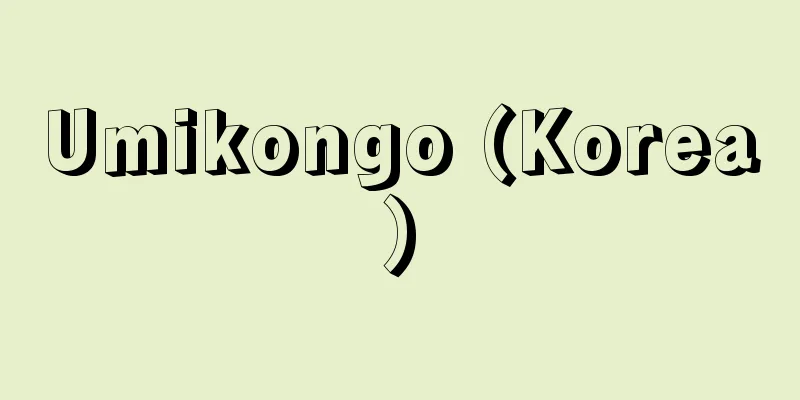Belgrade - Beograd (English spelling)

|
The capital of the Republic of Serbia. Its English name is Belgrade. It means "white city" in Serbian. It is located at an altitude of about 120 meters in the triangle where the Sava River joins the Danube River. Its population is 1,576,124 (2002). To the south of the old town is the new industrial district Železnik, and modern residential areas spread out in Banjica and its surrounding areas. To the northwest is Zemun, where many Germans once lived. After World War II, Novi Beograd (meaning "New Belgrade") was built on the left bank of the Sava River, and some federal government ministries and modern apartment complexes were built. The old town is home to the federal government and the administrative offices of the republic, and the Patriarchate of the Serbian Orthodox Church. It is a key point for land and river traffic, and more than one million tons of cargo are transported on the Sava River and the Danube River annually. It is connected to the domestic and international markets through the Orient Express era station and the international airport at Surčin. The city is a commercial and industrial center with over 150 companies, including factories for machinery and equipment, trucks and tractors, bearings, electrical equipment, and silk-reeling, and industries such as textiles, food, leather, chemicals, and pharmaceuticals. As the center of the Balkans and a constant target of competition since ancient times, the city has been destroyed many times and not many old buildings remain. Existing historical buildings are the Bayrakli Mosque (late 17th century) and Dostei Lycee (late 18th century), as well as the Serbian Cathedral (1837), the main temple of the Serbian Orthodox Church and the Patriarch's seat, the National Museum (1844), the Palace of Princess Ljubica (1831), the National Theatre (1863), the university, and the Academy of Sciences and Arts, all of which are 19th century buildings. However, there are many things worth seeing, such as the flow of the Danube and Sava rivers, the skyscrapers of New Belgrade (mainly residential areas), the expanse of the Pannonian plain, the Church of St. Sava, the Church of St. Mark, the Fresco Gallery exhibiting copies of medieval religious paintings scattered throughout the country, and the Tomb of the Unknown Soldier by Meštrovic on Avala Hill in the suburbs. Other attractions include the Federal Parliament Building, the Terazije shopping district, the Belgrade Zoo, and the Maracana Stadium, a soccer stadium with a capacity of 100,000. The Japanese Embassy is located in New Belgrade. The airstrikes by NATO (North Atlantic Treaty Organization) forces that began in March 1999 over the Kosovo issue caused damage to the city, including the Chinese Embassy. [Tamura Ritsu] historyBelgrade is a key transportation point and a military location of great importance, and various ethnic groups have passed through it since ancient times. The city was founded in the 4th to 3rd centuries BC when the Celts built the Singidunum Fortress. In the 5th and 6th centuries, the Huns, Goths, Avars, and others ruled the city, and the Slavs arrived. The name Bjelgrad (White City) first appears in records from 878. In the 12th and 13th centuries, the Byzantine Empire, the Kingdom of Hungary, and the Kingdom of Bulgaria fought for control of Belgrade. It was later ruled by Serbia, but after 1521 it was incorporated into the territory of the Ottoman Empire (Turkey), and continued to be occupied until the early 19th century, except for three short periods when the Austrians ruled the city. It was the capital of the First Serbian Uprising from 1804 to 1813, a principality from 1830 to 1878, a kingdom from 1878, the Kingdom of Yugoslavia (official name 1929) from 1918, and the Socialist Federal Republic of Yugoslavia (official name 1963, former Yugoslavia) from 1945. It was also the capital of the Federal Republic of Yugoslavia (New Yugoslavia), which consisted of the republics of Montenegro and Serbia, from 1992, and of Serbia and Montenegro from 2003 to 2006. [Tamura Ritsu] [References] | | | | | |The capital of Serbia. The photo shows the south side from Kalemegdan Park. Novi Belgrade is on the left bank of the Sava River (right side of the photo). Belgrade, Serbia ©Shogakukan "> Belgrade city Source: Shogakukan Encyclopedia Nipponica About Encyclopedia Nipponica Information | Legend |
|
セルビア共和国の首都。英語名ベルグラードBelgrade。セルビア語で「白い町」の意。サバ川がドナウ川に合流する三角地帯の標高約120メートル付近に位置する。人口157万6124(2002)。旧市街の南に新しい工業地区ジェレズニクŽeleznikがあり、またバニツァBanjicaとその周辺には近代的な住宅地が広がる。北西には、かつてドイツ人が多く住んでいたゼムンZemunがある。第二次世界大戦後サバ川左岸にノビ・ベオグラードNovi Beograd(「新ベオグラード」の意)が建設され、一部の連邦政府省庁と近代的なアパート群ができた。旧市街には連邦政府、共和国の行政庁があり、セルビア正教会の総主教座が置かれている。 陸と川の交通の要所であり、サバ川、ドナウ川で運ばれる貨物は年間100万トン以上にのぼる。オリエント急行時代の駅やスルチンの国際空港で国内外と結ばれている。市は商工業の中心地で、150を超える企業があり、機械・器具、トラック・トラクター、ベアリング、電気器具、製糸の各工場があり、織物、食品、皮革、化学、薬品などの産業が発達している。古来バルカンの中枢としてつねに争奪の的だっただけに、町は幾度も破壊され古いものはあまり残っていない。現存する歴史的建造物はバイラクリ・モスク(17世紀末)、ドシテイのリセ(18世紀末)を除き、総主教座のあるセルビア正教会本寺であるセルビア大聖堂(1837)、国立博物館(1844)、リュビツァ公女邸(1831)、国立劇場(1863)、大学や科学・芸術アカデミーなどすべて19世紀の建物である。だがシンギドゥヌムSingidunum城塞(じょうさい)跡のカレメグダンKalemegdan公園から眺めるドナウ、サバ両大河の流れとノビ・ベオグラード(おもに住宅地)の高層ビル、パンノニア平原の広がり、聖サバ教会、聖マルコ教会、国内に散在する中世の宗教絵画コピーを展示するフレスコ画廊、郊外のアバラAvala丘上に立つメシュトロビッチMeštrovic作無名戦士の墓など、見るべきものは多い。ほかに、連邦議事堂、ショッピング街のテラジエ、ベオグラード動物園、10万人収容のサッカー競技場マラカナ・スタジアムなどがある。日本大使館はノビ・ベオグラードにある。なお、コソボ問題をめぐって1999年3月から始まったNATO(ナトー)(北大西洋条約機構)軍の空爆により、中国大使館など、市内にも被害が生じた。 [田村 律] 歴史交通の要所で軍事的にも重要な地点であるため、古来さまざまな民族が往来し、紀元前4~3世紀にケルト人がシンギドゥヌム城塞を築いたのが町の始まりである。5~6世紀には、フン人、ゴート人、アバール人などが支配したのち、スラブ人がやってきた。878年の記録に、初めてビェルグラードBjelgrad(白い町)という名が散見される。12~13世紀には、ビザンティン帝国、ハンガリー王国、ブルガリア王国がベオグラードの支配権を争った。その後セルビアが支配することになるが、1521年以後、オスマン帝国(トルコ)の領土に組み込まれ、途中三度オーストリア人が支配した短期間を除き、19世紀初頭まで占拠され続けた。1804年から13年まで第一次セルビア蜂起(ほうき)時代、30年から78年までは公国、1878年からは王国、1918年からはユーゴスラビア王国(正式名称は1929年)、1945年からはユーゴスラビア社会主義連邦共和国(正式名称は1963年、旧ユーゴスラビア)の首都。1992年からはモンテネグロとセルビア両共和国からなるユーゴスラビア連邦共和国(新ユーゴスラビア)の、2003~06年にはセルビア・モンテネグロの首都でもあった。 [田村 律] [参照項目] | | | | | |セルビアの首都。写真はカレメグダン公園から南側を望む。サバ川左岸(写真右側)がノビ・ベオグラード。セルビア ベオグラード©Shogakukan"> ベオグラード市街 出典 小学館 日本大百科全書(ニッポニカ)日本大百科全書(ニッポニカ)について 情報 | 凡例 |
<<: Peon (English spelling) peón [Spain]
Recommend
Achisu [Hot Spring] - Achisu
…In the late Middle Ages, it was called Shiramats...
Announcer - announcer (English spelling)
In a broad sense, it includes people who make ann...
Iwao Uchida - Uchida Iwao
Western-style painter. Born in Tokyo. Eldest son ...
Tiliqua scincoides; blue-tongued skink
Order Lacertidae, Family Lacertidae. A relatively ...
John Churchill, 1st Duke of Marlborough
1650‐1722 British soldier. Also known as the Duke ...
Dahl - Robert Alan Dahl
A leading American scholar of modern political sc...
Inverted tooth - Soppa
Also called bucktooth. This is an improper bite co...
Olmec Style
The Olmec culture in Mesoamerica created a unique...
Gastroenteric reflex
…For example, after eating, a sudden strong movem...
Phascolosoma scolops (English spelling)
... Phascolosoma scolops are closely related to t...
Nursing
In ancient times, nursing originated from human m...
Caecilius Cyprianus
A Latin Father of the ancient Christian Church. B...
Northern Russian Dialect - Kitadairoshyahogen
... In addition to the nouns, adjectives, numeral...
Malsburg, C. von der (English spelling)MalsburgCvonder
… Of course, this structure places limitations on...
Iga Group
〘 noun 〙 The Edo Shogunate's rifle corps, orga...









